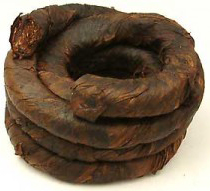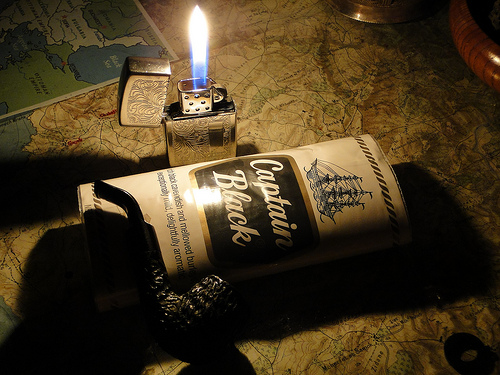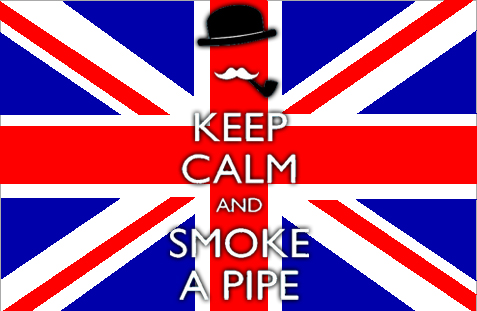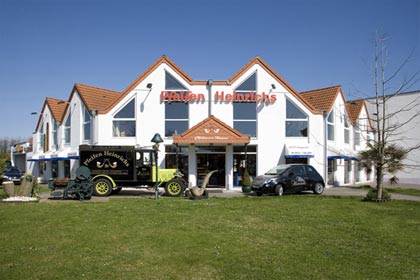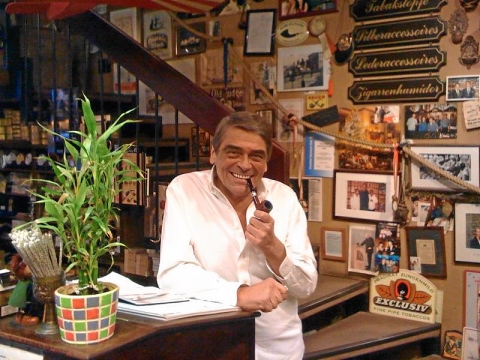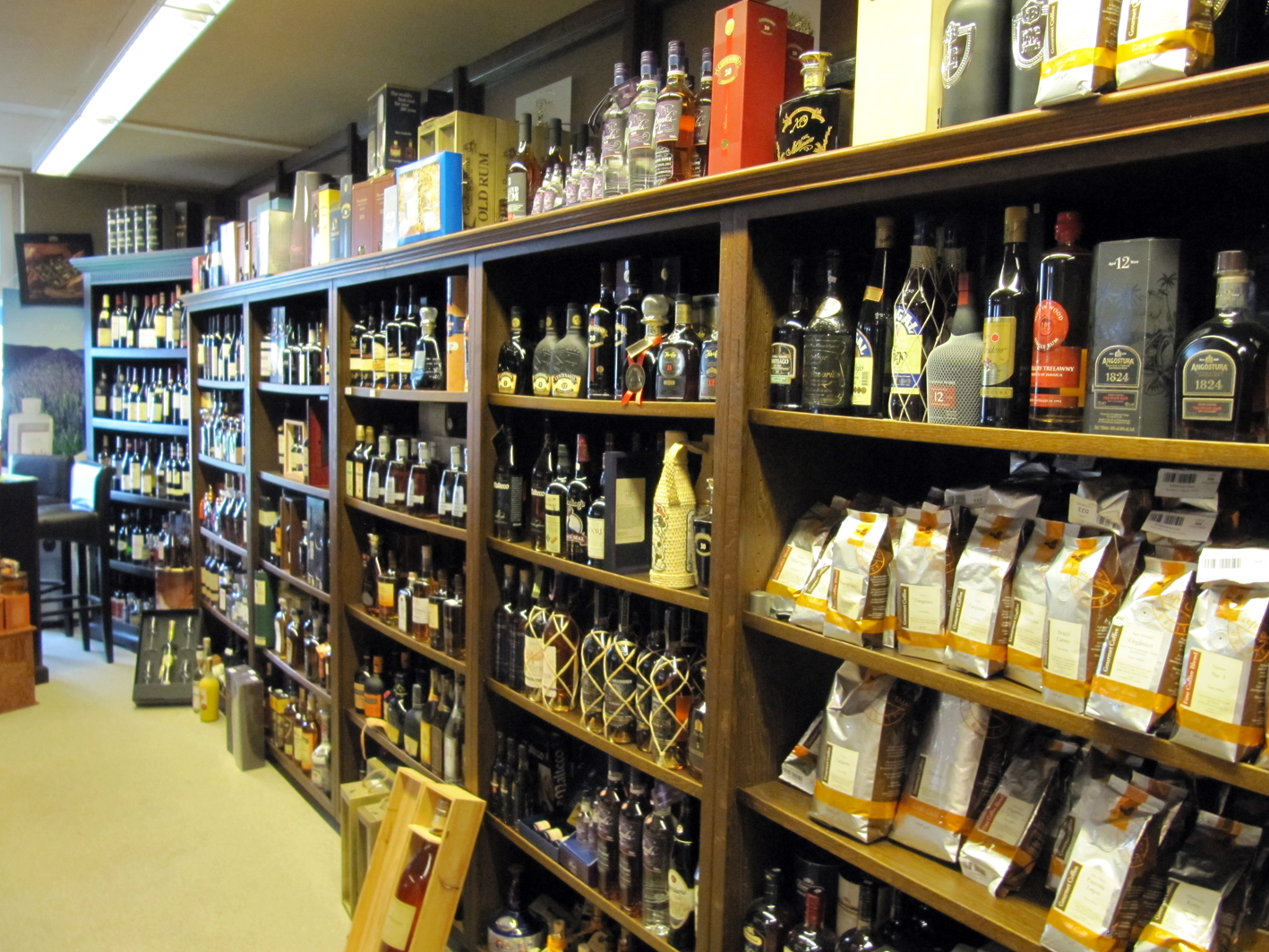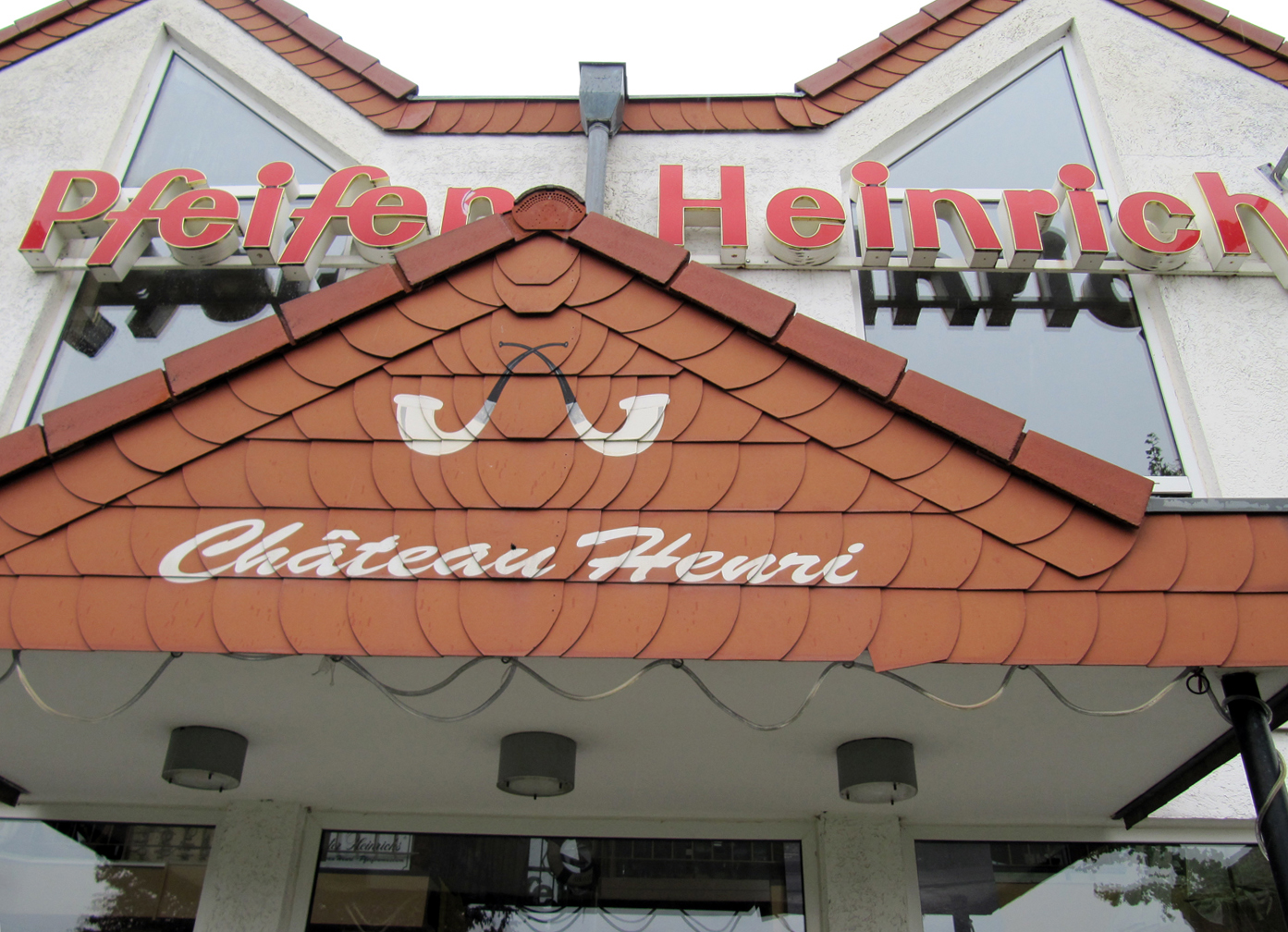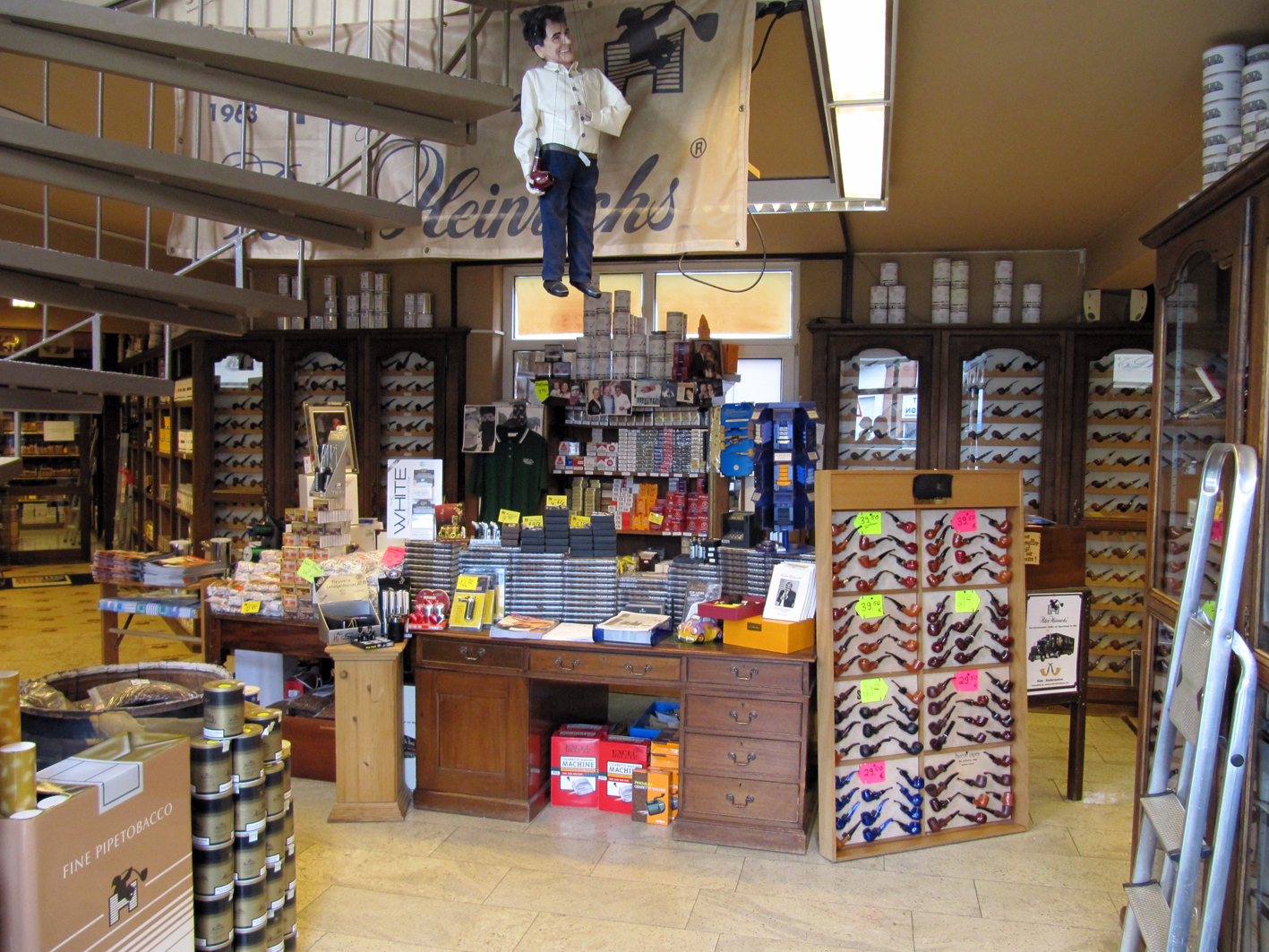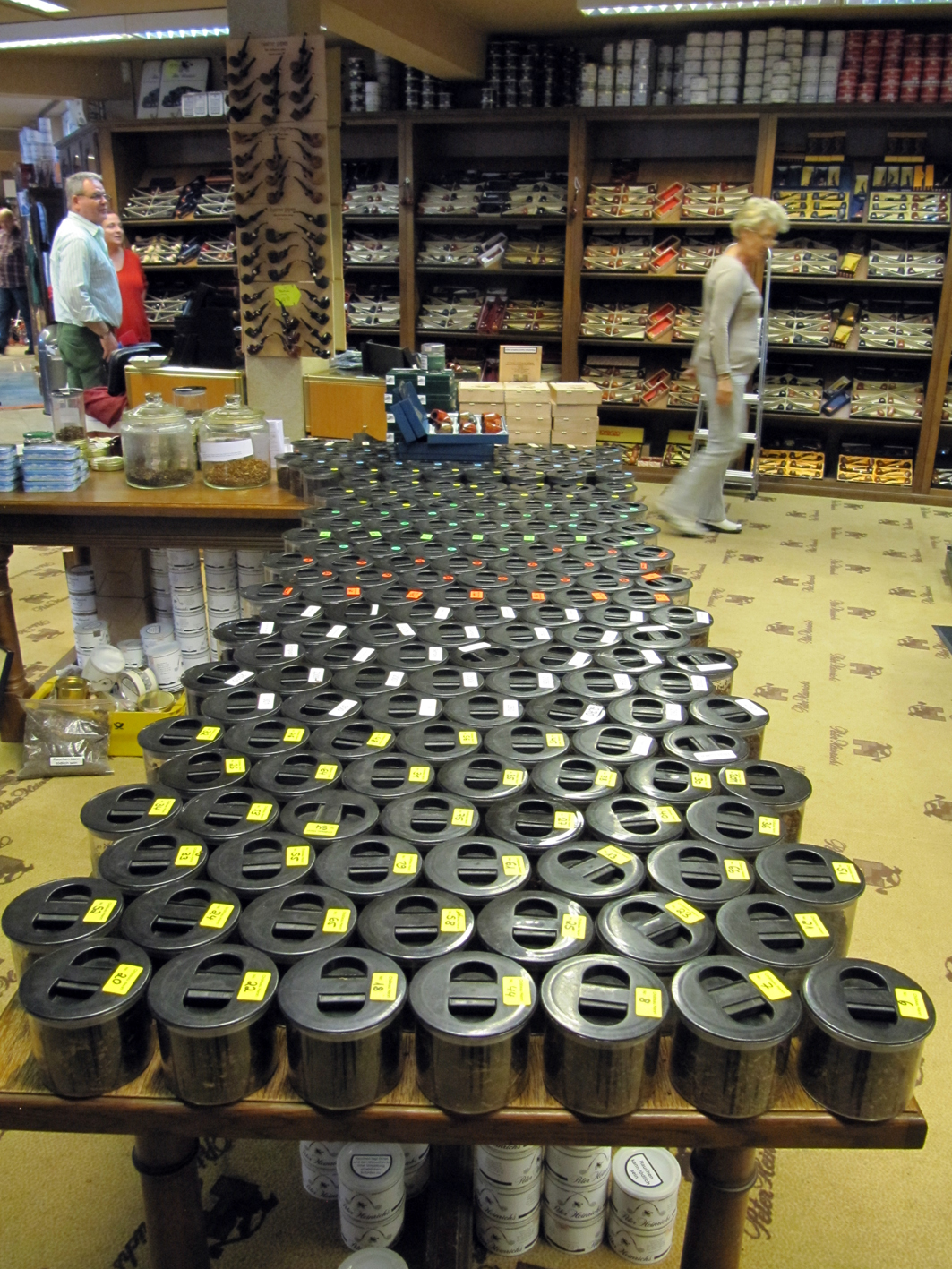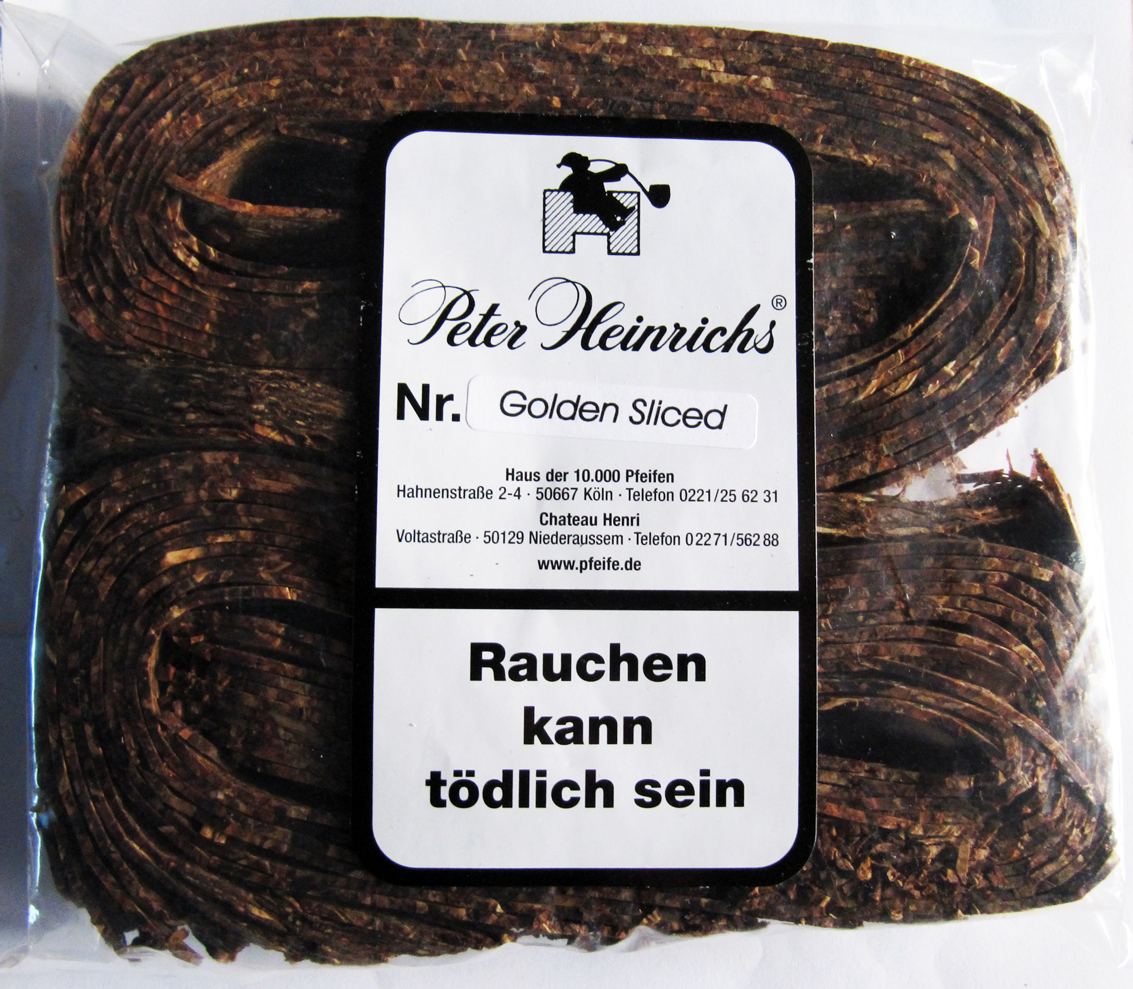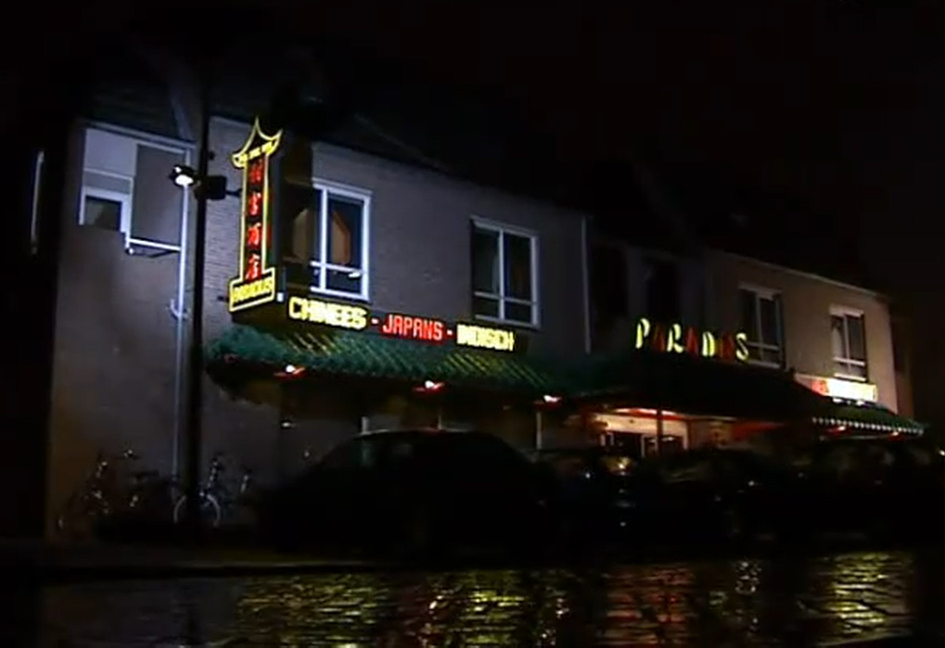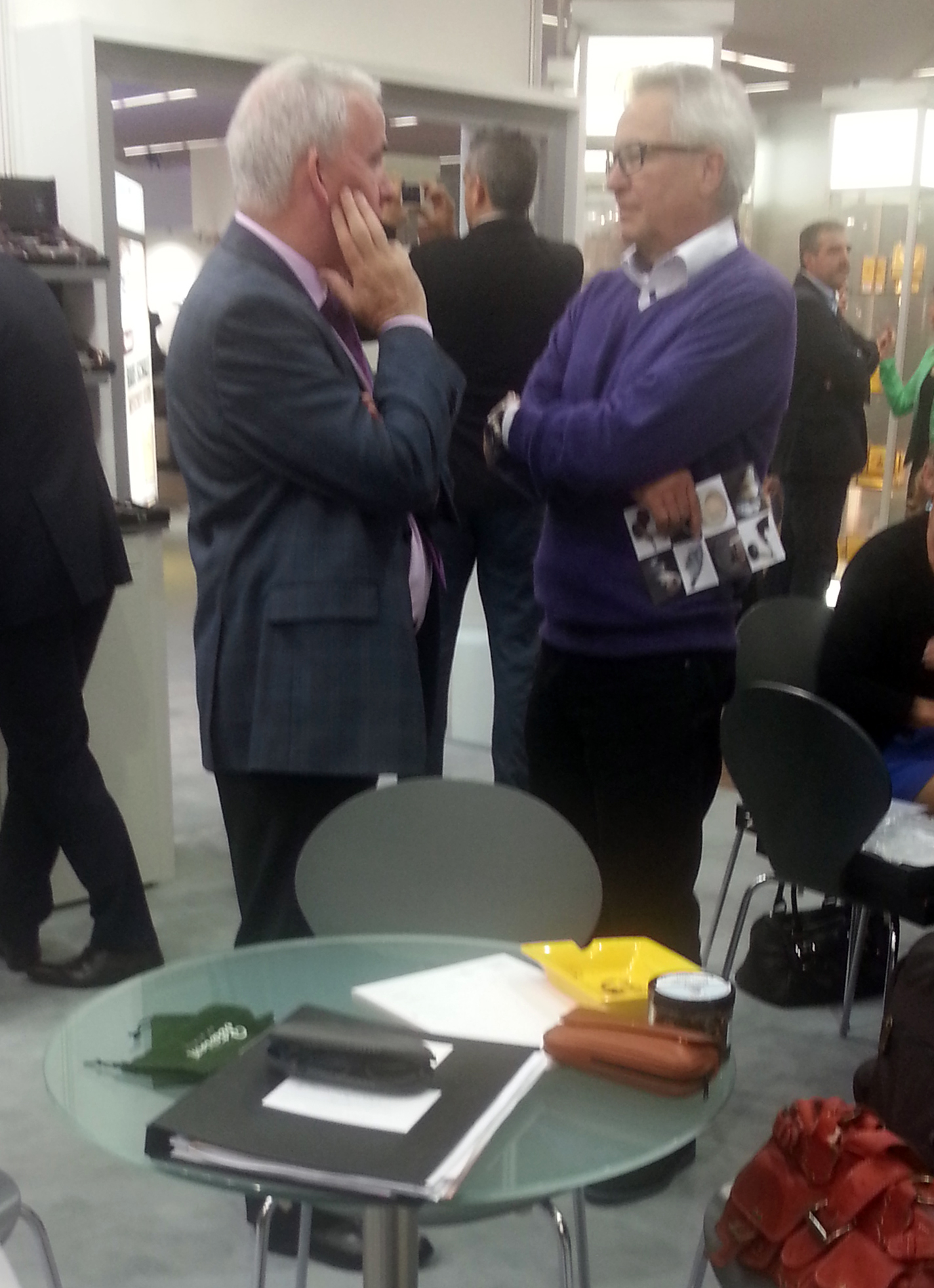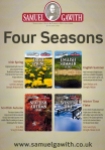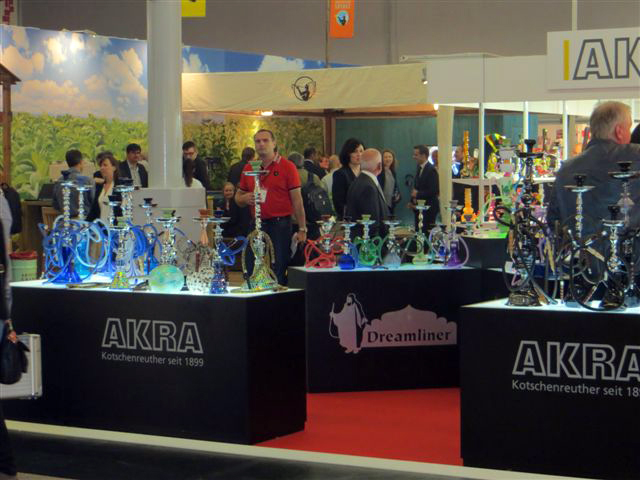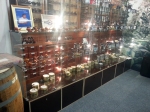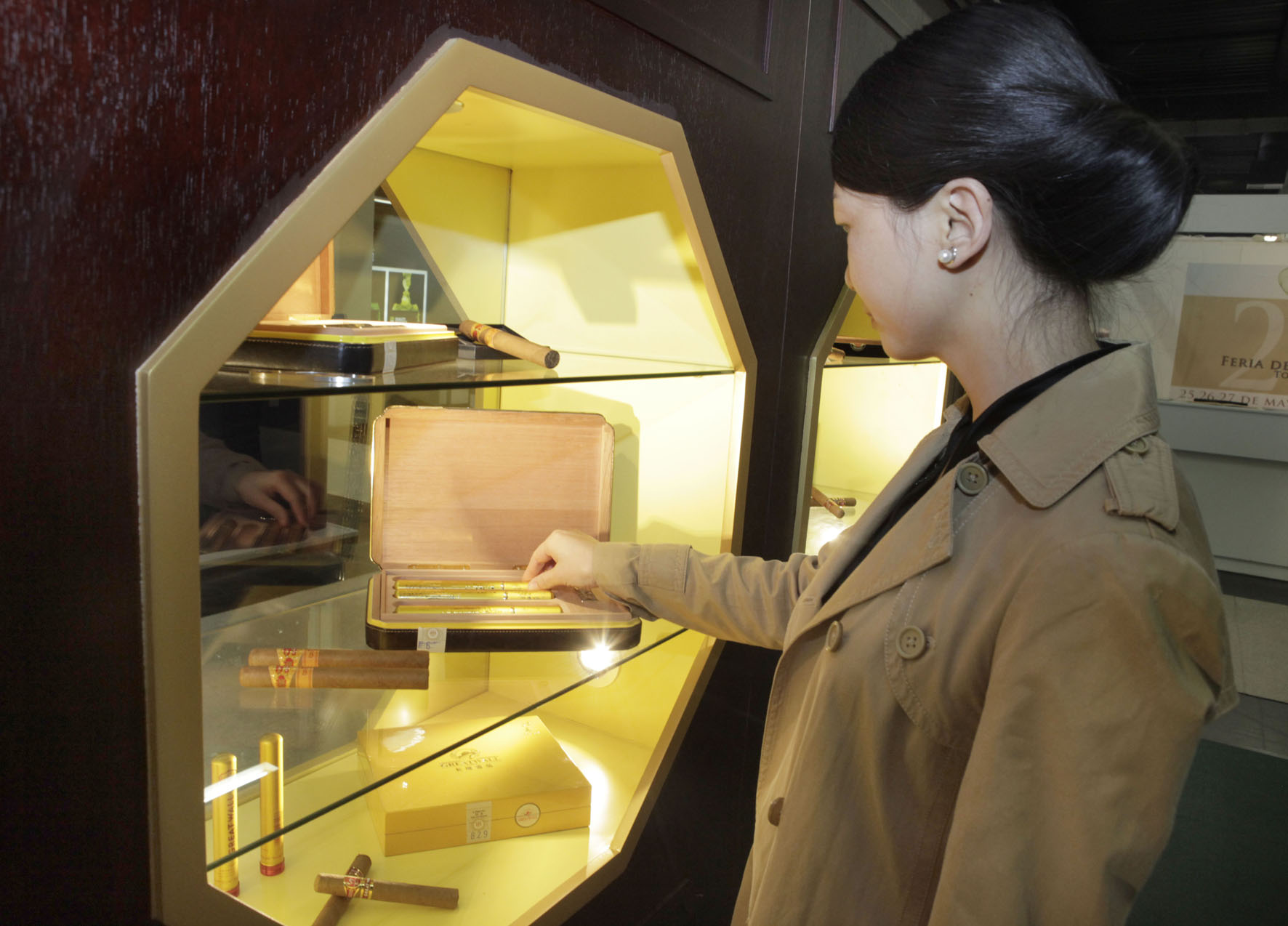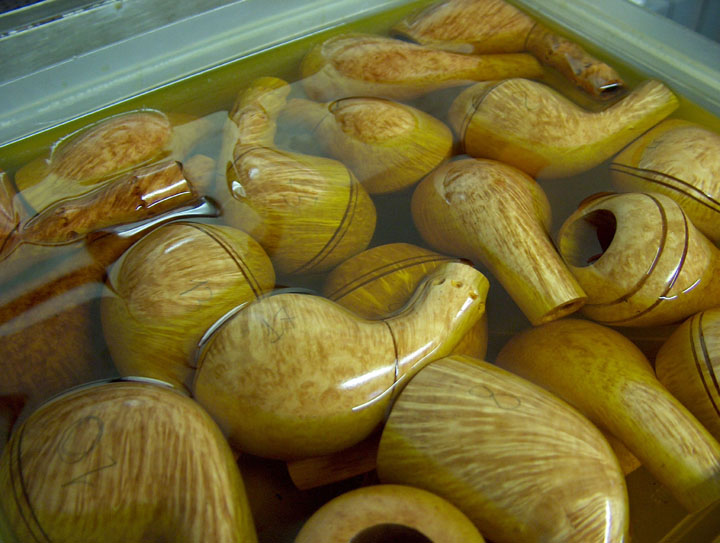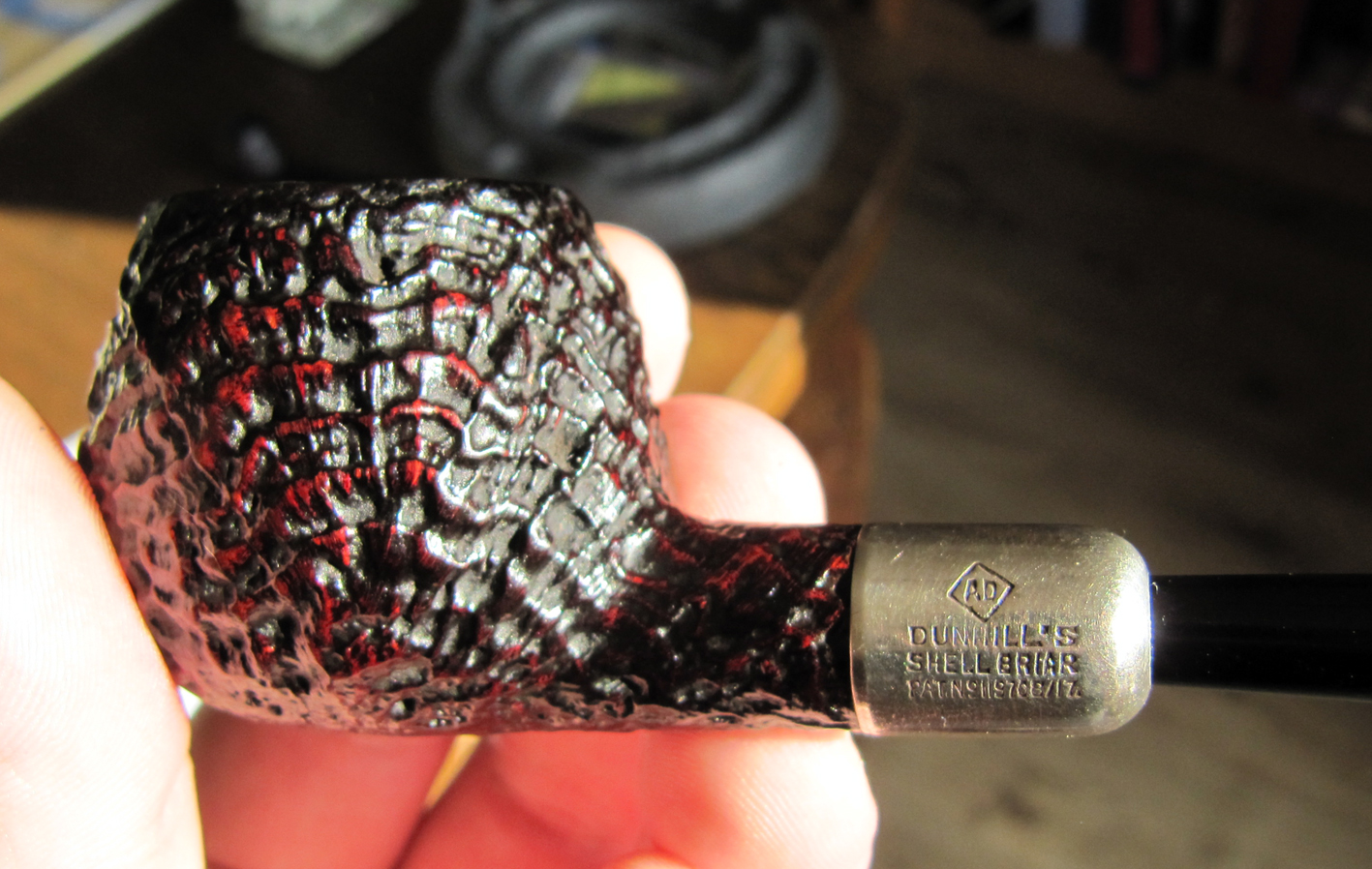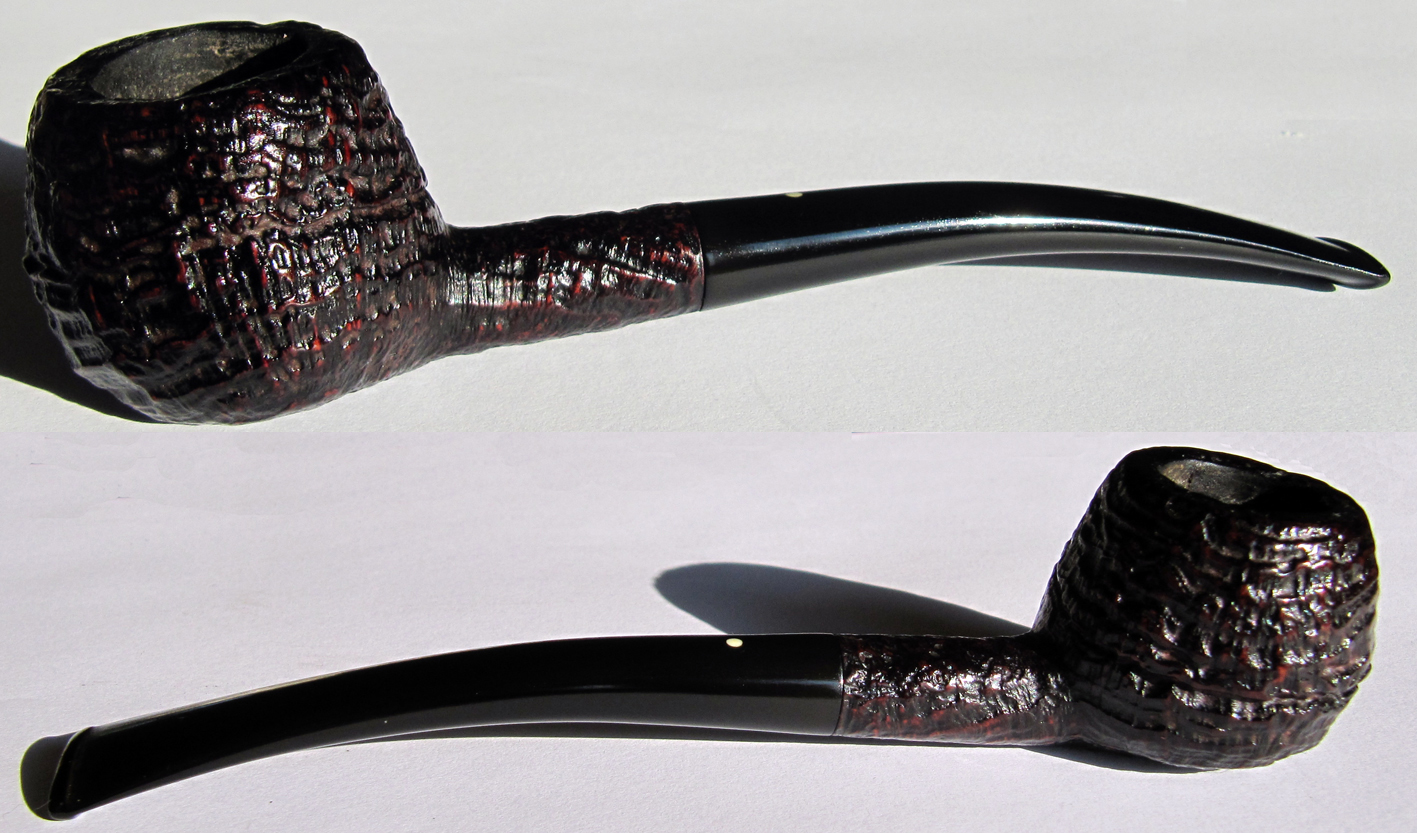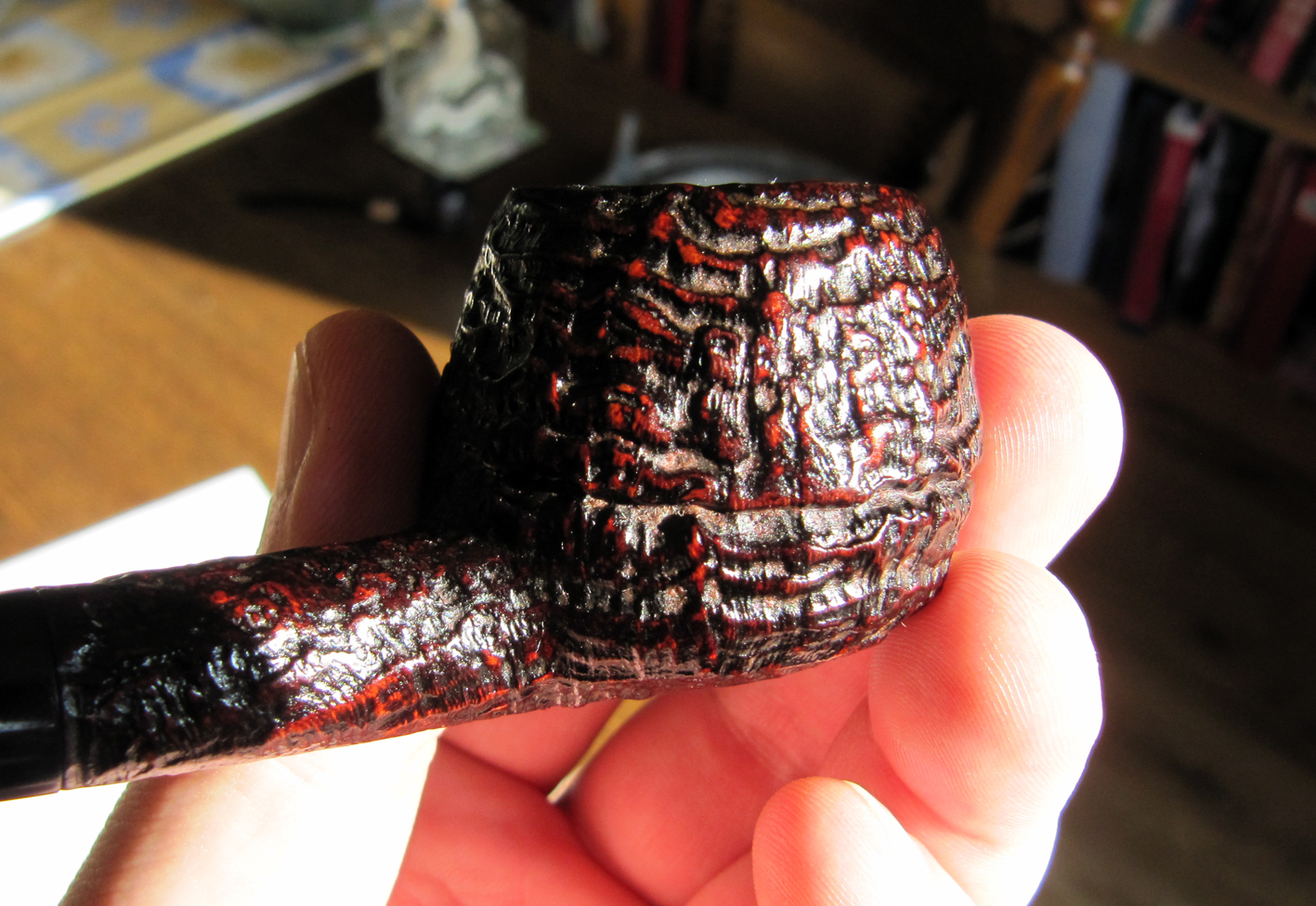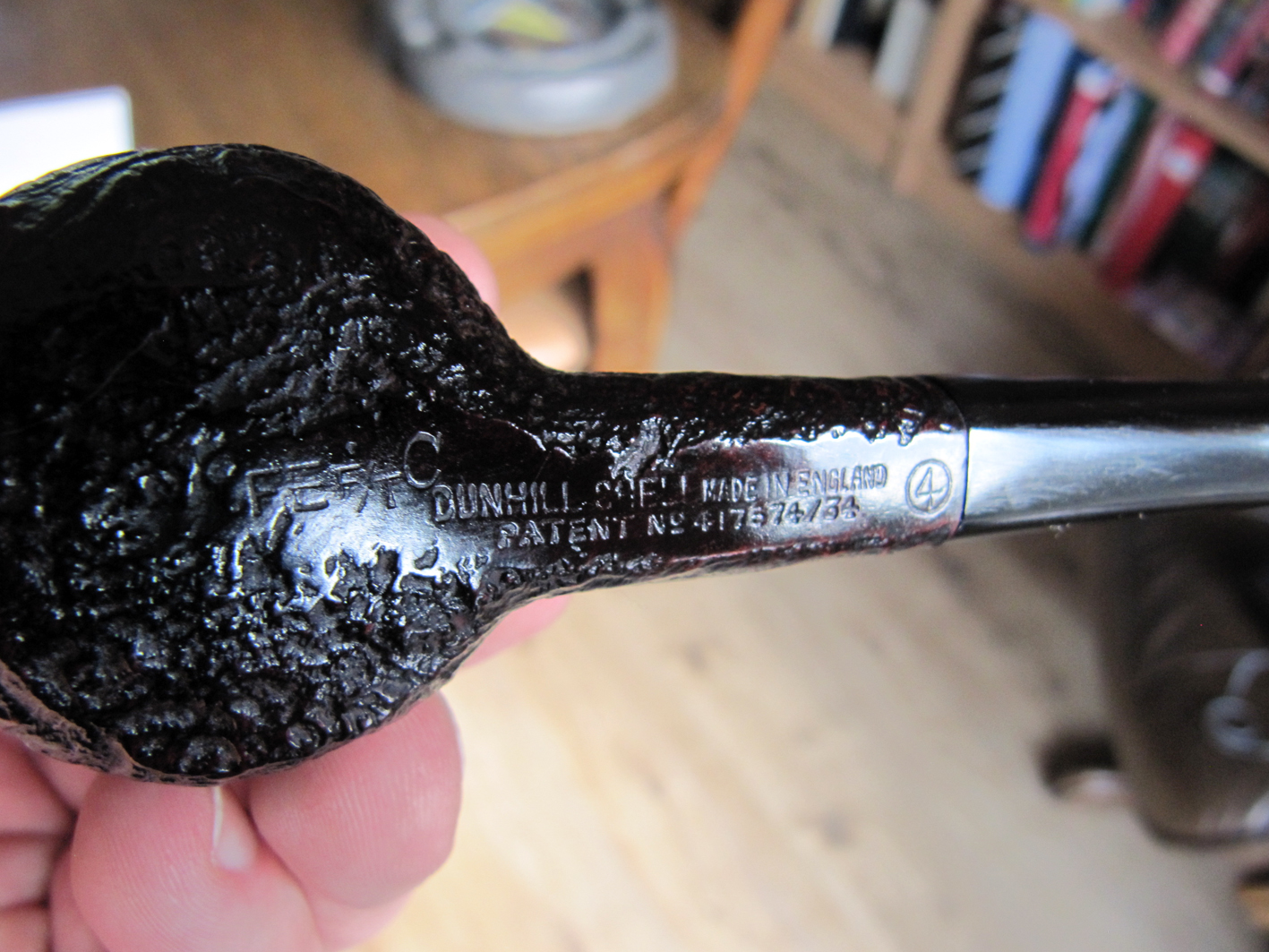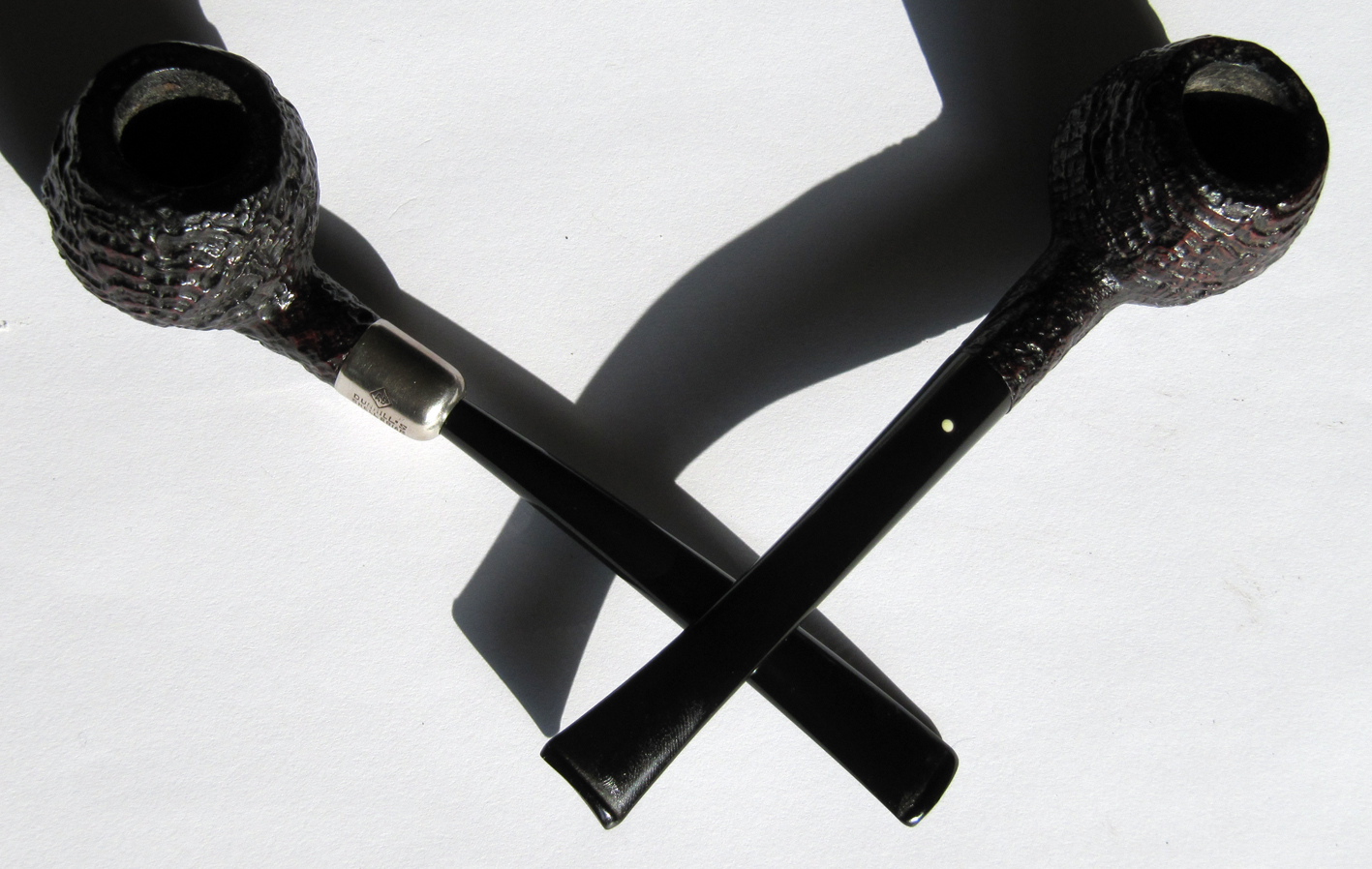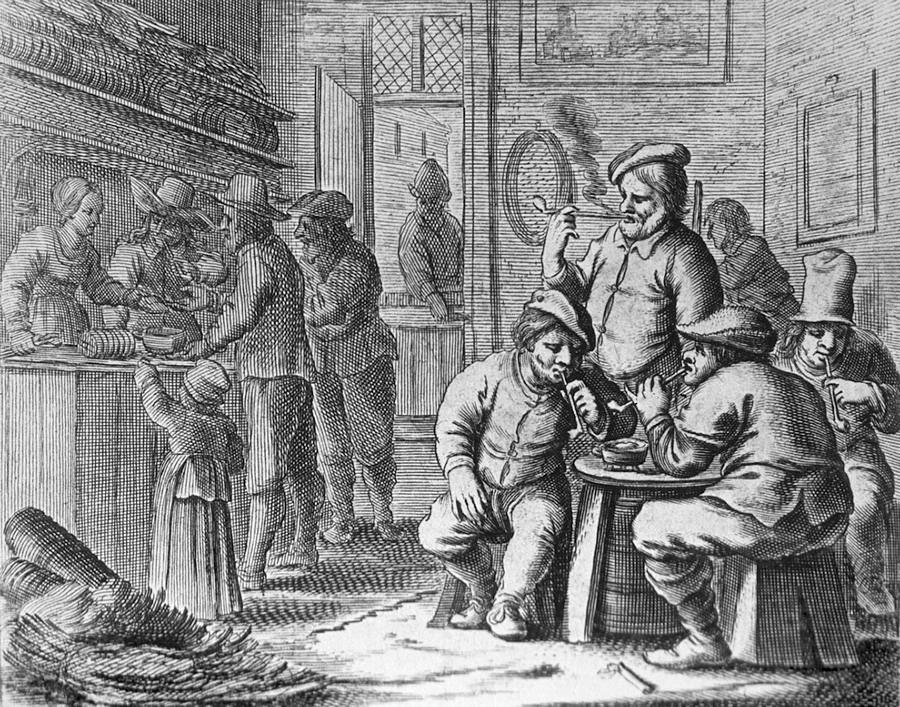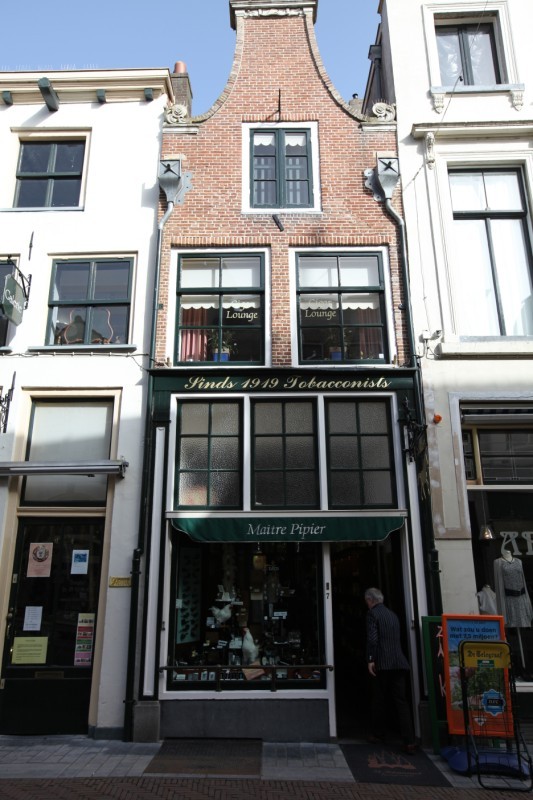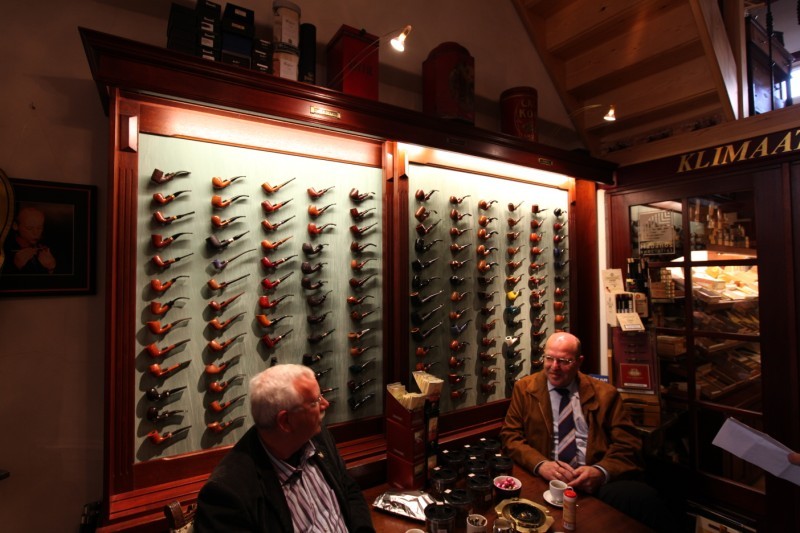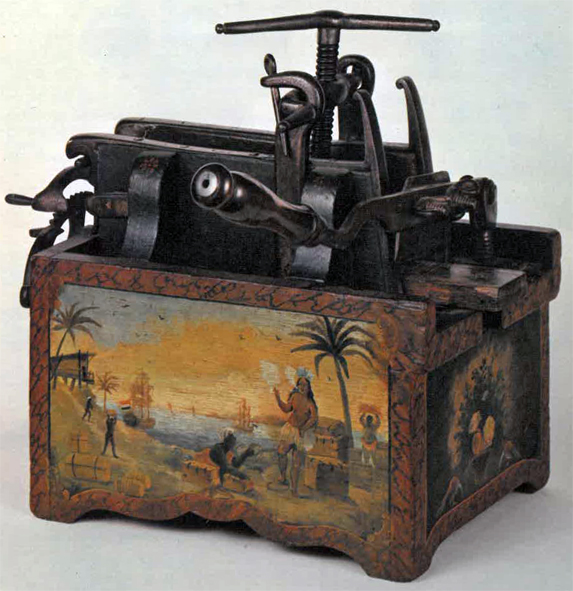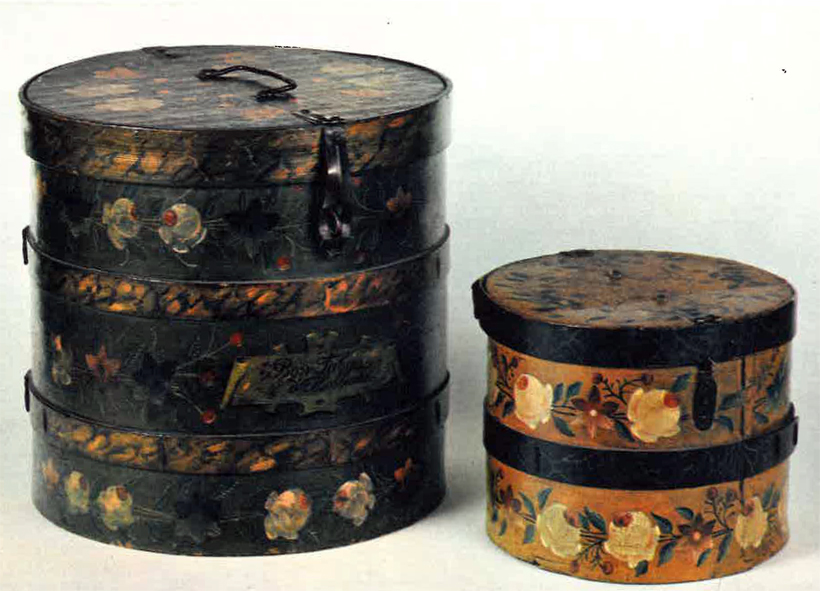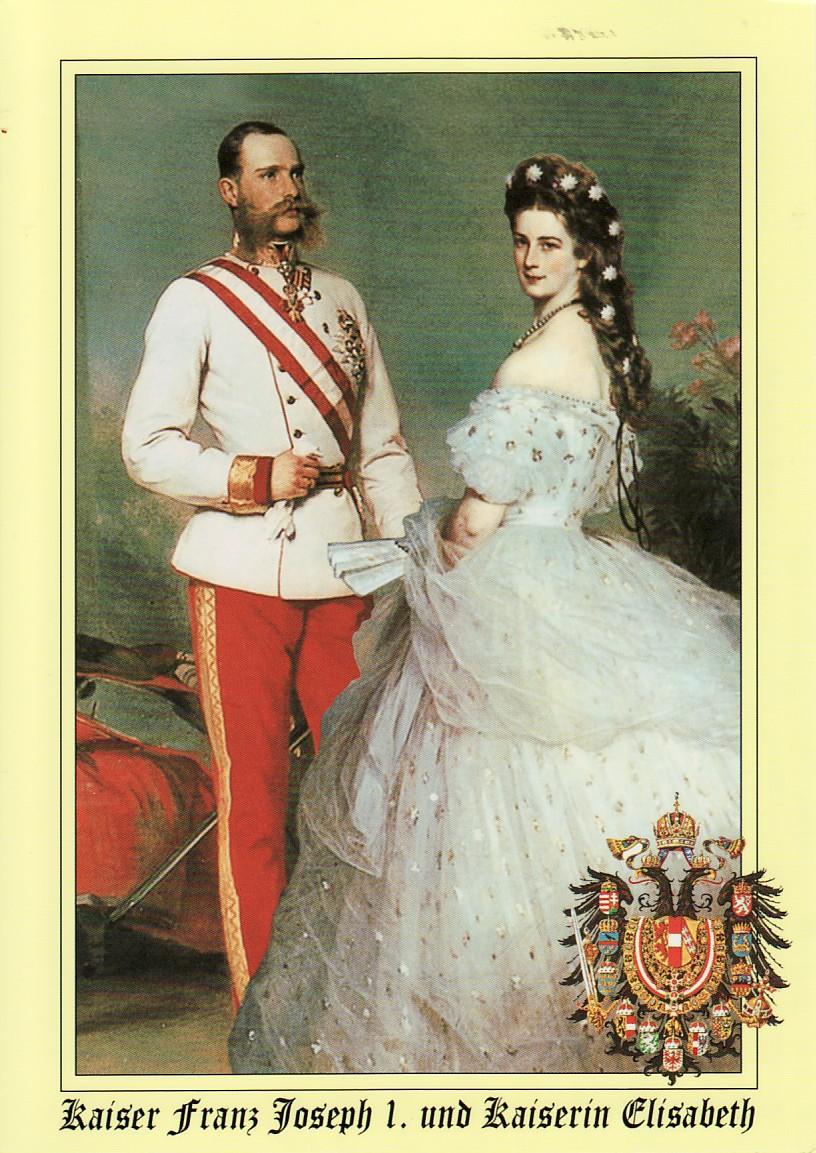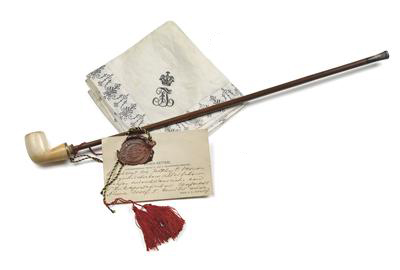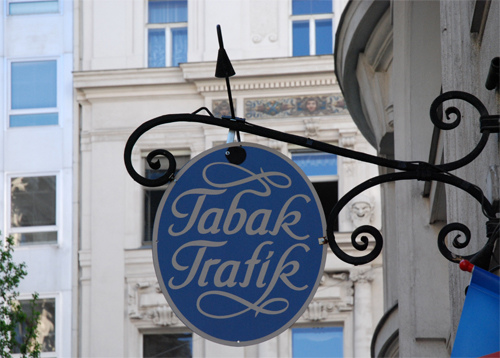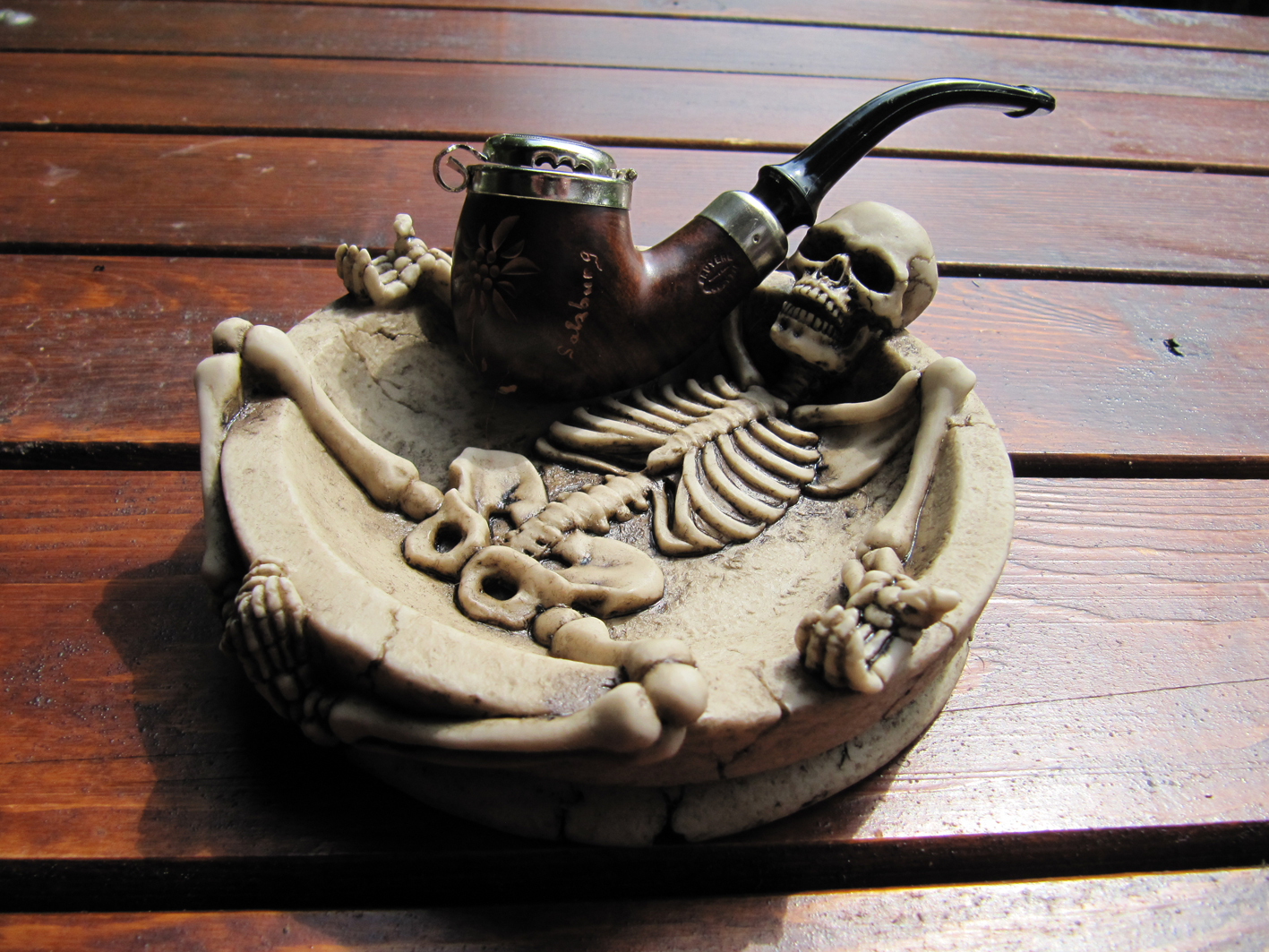If in the world of pipe tobaccos Balkan Sobranie Original Smoking Mixture is the king of Balkan-style blends, then Escudo Navy De Luxe reigns over the Virginia–Perique (VaPer) offerings. A legendary tobacco which is still made today, despite the many times it looked like the blend was going to be discontinued.
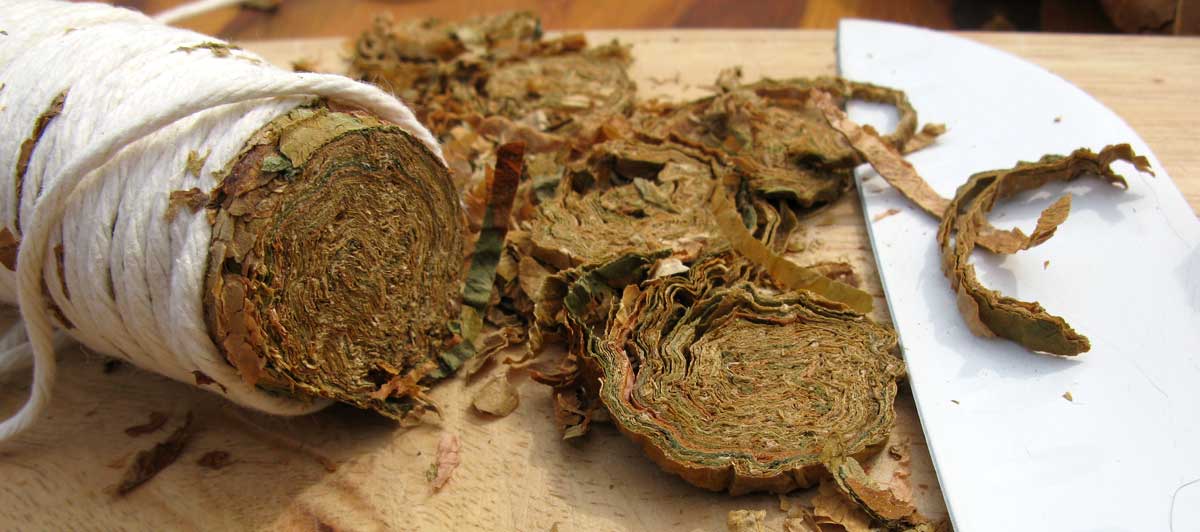 Escudo is a so called Navy Cut tobacco. In the old days sailors twisted tobacco into a roll, a Navy Plug, and tied it firmly in ropes or canvas while regularly moistening the leaves with liquids like rum and molasses. This way the tobacco matured during their voyages and (of course) improved which was certainly noticed. The sailors cut pieces from the end for chewing (this happened most of the times because smoking was often forbidden on the wooden ships, imagine, a little spark and *whoosh*) or they cut coins that could be loaded into pipes. The flakes we know today from tobacco manufacturers are evolutions of the pressing that the sailors invented to keep their tobacco usable. These days the term Navy Cut is used inadequately and it is often applied to any tobacco that is pressed and cased with anything you can think of. So tobaccos like Escudo, Three Nuns, twists and ropes are true Navy Cuts and are as close to the real thing as one can get today.
Escudo is a so called Navy Cut tobacco. In the old days sailors twisted tobacco into a roll, a Navy Plug, and tied it firmly in ropes or canvas while regularly moistening the leaves with liquids like rum and molasses. This way the tobacco matured during their voyages and (of course) improved which was certainly noticed. The sailors cut pieces from the end for chewing (this happened most of the times because smoking was often forbidden on the wooden ships, imagine, a little spark and *whoosh*) or they cut coins that could be loaded into pipes. The flakes we know today from tobacco manufacturers are evolutions of the pressing that the sailors invented to keep their tobacco usable. These days the term Navy Cut is used inadequately and it is often applied to any tobacco that is pressed and cased with anything you can think of. So tobaccos like Escudo, Three Nuns, twists and ropes are true Navy Cuts and are as close to the real thing as one can get today.
Escudo was first made by Cope Bros & Co; a Liverpool based company that manufactured tobacco products from 1848 until 1952. There is much to tell about Cope Bros & Co but that will be for another time. Let us focus on Escudo for now. Tobaccoreviews.com says that it was produced there from 1870 to 1936 but I think that is bullshit. First, Cope had a blend called “Navy Cut” but there was no trace of a “Navy De Luxe”. Pipesmagazine forum-member misterlowercase (hello Troy! Also thanks for the pictures below!) has several old Smoke Room booklets (promotional booklets made by Cope) from the 1880’s and he says no mention was made of Escudo Navy De Luxe. He could only find an ad for Cope’s Navy Cut. Second, the Portuguese Escudo coin (after which the blend was named) was introduced on 22 May 1911, after the 1910 Republican revolution. An ad from 1964 says the blend was perfected in 1912, which could very well be the case keeping the Portuguese Escudo coin in mind.
Late 1952 Cope Bros & Co was bought by Gallaher. Tobaccoreviews.com says the date was 1936 and I have noooo idea where that comes from.. They manufactured Escudo until 1994 when it was discontinued worldwide. Gallaher claimed that the costs of making it for a smaller and declining market were too high. Behind the scenes Danish company A&C Petersen was negotiating for the trademark, original equipment (!) and recipe in which they succeeded in 1997. At first they re-introduced it to Denmark only with Danish language tins. Later in 1999 A&C Petersen started shipping Escudo to the USA again to the delight of the pipe-smokers there.
Here in good ol’ Europe mainland the blend also did return. But not for long.. I asked fellow Dutch Pipesmokers forum member and VaPer fan Huub (who has a vast knowledge about pipes and tobacco) when he bought his last tin of Escudo in The Netherlands. “At the end of the 90’s I was able to get one tin and then it did not came back” was his answer which fitted perfectly with the information I already had. Also, at the end of 90’s a new blend under the Dunhill name appeared on the market: De Luxe Navy Rolls. Eejj, a new navy cut blend just when Escudo has disappeared from the market, what a coincidence! *ahum…* My suspicion is that there may have been a problem with the worldwide use of the Escudo trademark and somehow we in Europe ended up with the De Luxe Navy Rolls in stead of Escudo. For the discussion if the De Luxe Navy Rolls taste the same as Escudo I am directing you forward to 2 interesting articles on PipesMagazine.com: Dunhill & Escudo Navy De Luxe the Same? and Dunhill & Escudo Navy De Luxe: The Verdict. Plus I read somewhere that somebody did a test with the pH-measures of both blends. The outcome was that they were the same..
![]() In 2000 A&C Petersen were acquired by Orlik and the blend was taken off the USA market very shortly after that because of a trademark issue. It was not clear if A&C Petersen had the worldwide rights to Escudo. The involved parties went to work and cleared it up so that it returned. Despite Orlik ownership the blend was continued under the A&C Petersen brand. At that time the Scandinavian Tobacco Group (STG) had a 50% share in Orlik (in 2008 that became 100 %). In 2004 they both decided to apply for a trademark-transfer to STG and the production of Escudo went from A&C Petersen to the Orlik/STG factory in Assens, Denmark. In 2006 they won the trademark and slowly started re-labelling the tins. So if you have a 2005 Escudo tin with A&C Petersen on it, well, it was made in the Orlik factory. Oh, dating Escudo tins is simple. Look for the code on the left of the barcode. The first 6 digits stand for the Year, Date and Month. So if the first 6 digits are for example 121105, the production date is May 11th 2012. And for those of you who have tins with “Made in Denmark for Peter Stokkebye” on the backside, that company has been owned by STG for many years. Nowadays it is simple and clear: “Made in Denmark by Scandinavian Tobacco Group Assens A/S”.
In 2000 A&C Petersen were acquired by Orlik and the blend was taken off the USA market very shortly after that because of a trademark issue. It was not clear if A&C Petersen had the worldwide rights to Escudo. The involved parties went to work and cleared it up so that it returned. Despite Orlik ownership the blend was continued under the A&C Petersen brand. At that time the Scandinavian Tobacco Group (STG) had a 50% share in Orlik (in 2008 that became 100 %). In 2004 they both decided to apply for a trademark-transfer to STG and the production of Escudo went from A&C Petersen to the Orlik/STG factory in Assens, Denmark. In 2006 they won the trademark and slowly started re-labelling the tins. So if you have a 2005 Escudo tin with A&C Petersen on it, well, it was made in the Orlik factory. Oh, dating Escudo tins is simple. Look for the code on the left of the barcode. The first 6 digits stand for the Year, Date and Month. So if the first 6 digits are for example 121105, the production date is May 11th 2012. And for those of you who have tins with “Made in Denmark for Peter Stokkebye” on the backside, that company has been owned by STG for many years. Nowadays it is simple and clear: “Made in Denmark by Scandinavian Tobacco Group Assens A/S”.
 So, now on to the review. Yeahyeah, I know Escudo already has been reviewed to death but screw that, I am still going to do it hehehe. Unfortunately I never had the chance to smoke or buy (*kat$jing!*) the Cope, Gallaher or A&C Petersen Escudo incarnations so my humble tin comes from the Orlik/STG factory and was produced at August 9th 2011.
So, now on to the review. Yeahyeah, I know Escudo already has been reviewed to death but screw that, I am still going to do it hehehe. Unfortunately I never had the chance to smoke or buy (*kat$jing!*) the Cope, Gallaher or A&C Petersen Escudo incarnations so my humble tin comes from the Orlik/STG factory and was produced at August 9th 2011.
 Package/tin description: A round 50 gr. tin with on the front the classic trademark “Escudo Navy De Luxe” and on the backside the following description: A combination of full bodied Virginia from North Carolina and Virginia blended with Perique from Louisiana are the cornerstones in Escudo. The blend is pressed and matured before it is spun and cut into coins. This process ensures the unique character of “Escudo”.
Package/tin description: A round 50 gr. tin with on the front the classic trademark “Escudo Navy De Luxe” and on the backside the following description: A combination of full bodied Virginia from North Carolina and Virginia blended with Perique from Louisiana are the cornerstones in Escudo. The blend is pressed and matured before it is spun and cut into coins. This process ensures the unique character of “Escudo”.
 Contents/cut: Like I said before the blend is a navy cut, coins with a thickness around 1.5mm. They are neatly placed half on top of each other around the tin. And they look stunning! A piece of art for the pipe-tobacco connoisseur. Dark and light tobaccos are spun together to a very pleasant to watch coin which gets darker by age. The moisture level is perfect, immediately ready for smoking.
Contents/cut: Like I said before the blend is a navy cut, coins with a thickness around 1.5mm. They are neatly placed half on top of each other around the tin. And they look stunning! A piece of art for the pipe-tobacco connoisseur. Dark and light tobaccos are spun together to a very pleasant to watch coin which gets darker by age. The moisture level is perfect, immediately ready for smoking.
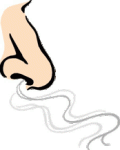 Smell from the tin: Newly opened there comes a fresh, bright smell from the tin. A kind of fruity (my guess would be plum), peppery (hello perique) smell which mingles elegantly with the hay-like scent from the Virginias. There definitely is some kind of light topping. I also noticed a slight odour which reminded me of a typical Dutch menthol liquorice sweet when I just pulled the lid off for the first time. But after a couple of days I did not detect it any more.
Smell from the tin: Newly opened there comes a fresh, bright smell from the tin. A kind of fruity (my guess would be plum), peppery (hello perique) smell which mingles elegantly with the hay-like scent from the Virginias. There definitely is some kind of light topping. I also noticed a slight odour which reminded me of a typical Dutch menthol liquorice sweet when I just pulled the lid off for the first time. But after a couple of days I did not detect it any more.
 Taste: First of all there is a bit of difference flavour-wise if you rub out the coins or fold and stuff them. Rubbed out you get a more consistent flavour throughout the bowl while with the fold-and-stuff method you get a bit more detail of the tobaccos involved. The times my nose started started to tickle while smoking I used that last method and probably hit a bit of perique. I prefer to rub. With the charring light there is no bitterness, just the full sweetness of the Virginias followed with a bit of zing from the perique. The first part you get bright top notes which are never too sharp (this blend does not bite). In combination with the occasional pepper-perique and the darker Virginias in the background these provide a rich creaminess. Halfway the bowl the tastes become stronger, fuller. Hay, wood and earthy flavours mingle with the sweet ones to a full creamy whole. Creaminess.. That is the main theme here. On the last small pipe-smokers meeting I attended someone smoked some Escudo for the first time. And he indeed said it was creamy. And lamented the fact it was not available in my small country.. The last part of the bowl I always dislike with this blend because before I know it, it is gone.
Taste: First of all there is a bit of difference flavour-wise if you rub out the coins or fold and stuff them. Rubbed out you get a more consistent flavour throughout the bowl while with the fold-and-stuff method you get a bit more detail of the tobaccos involved. The times my nose started started to tickle while smoking I used that last method and probably hit a bit of perique. I prefer to rub. With the charring light there is no bitterness, just the full sweetness of the Virginias followed with a bit of zing from the perique. The first part you get bright top notes which are never too sharp (this blend does not bite). In combination with the occasional pepper-perique and the darker Virginias in the background these provide a rich creaminess. Halfway the bowl the tastes become stronger, fuller. Hay, wood and earthy flavours mingle with the sweet ones to a full creamy whole. Creaminess.. That is the main theme here. On the last small pipe-smokers meeting I attended someone smoked some Escudo for the first time. And he indeed said it was creamy. And lamented the fact it was not available in my small country.. The last part of the bowl I always dislike with this blend because before I know it, it is gone.
 Combustibility: Very good, also because of the perfect moisture level of the coins. However, with the fold and stuff method Escudo requires some more re-lights. What amazes me is how long this blend lasts. In my Dunhill group 3 billiard (which fits one and a half coin) I am easily puffing for 1.5 hour!
Combustibility: Very good, also because of the perfect moisture level of the coins. However, with the fold and stuff method Escudo requires some more re-lights. What amazes me is how long this blend lasts. In my Dunhill group 3 billiard (which fits one and a half coin) I am easily puffing for 1.5 hour!
 Room-note: My girlfriend Ellen never says anything about the smell when I smoke Escudo. Which is a good thing! The blend produces rich fumes but Ellen does not seem to mind that plus the next morning you can barely notice I smoked the last evening.
Room-note: My girlfriend Ellen never says anything about the smell when I smoke Escudo. Which is a good thing! The blend produces rich fumes but Ellen does not seem to mind that plus the next morning you can barely notice I smoked the last evening.
Miscellaneous: In the nicotine department this blend is a tiny bit on the heavy side for me. But when I had a good dinner and smoke Escudo later in the evening, no problem at all. Also the blend ages very, very well. I believe it is the most cellared tobacco in the USA. I guess this also comes because there have been a couple of “Escudo-scares” throughout the years in which rumours were spread that the blend was being discontinued. 4noggins owner Rich certainly was very happy with the last scare halfway 2013, he sold dozens of Escudo tins per day!
 Price: At 4noggins you pay $9,99 (± €7,32) for a 50 gr. tin.
Price: At 4noggins you pay $9,99 (± €7,32) for a 50 gr. tin.
Alternatives: If you like Escudo there are some blends that are well suited for a change of pace or for a replacement if you can’t get the real stuff.
– Davidoff Flake Medallions (Referred to by some as “Escudo light”)
– Dunhill De Luxe Navy Rolls
– My Own Blend (Paul Olsen) Big Coin (made in the same factory as Escudo)
– Peter Heinrichs Curly Block (Recommended by many German pipe-smokers as THE replacement to the old Escudo. And it looks damn great! I smoked it and in comparison to current day Escudo this one is heavier in the nicotine department, has less sweet but fuller Virginias and more perique.)
– Peter Stokkebye Luxury Bullseye Flake (with a core of cavendish)
– Wessex Sovereign Curly Cut
Conclusion: I am not amazed at the fact that after all this time Escudo is one of most cellared and best selling tobaccos ever. It is the benchmark for all VaPer blends. I puffed away quite a few of those in the couple of years I smoke pipe, but every time I crack open a tin of Escudo it feels like coming home. The secret is that it is not an overly complex tobacco. All the ingredients are so well balanced that they provide a fullness of flavours for the archetypical VaPer smoking experience. Regardless of the age of the tin and in what kind of bowl you smoke it. All hail the VaPer king: Escudo!











